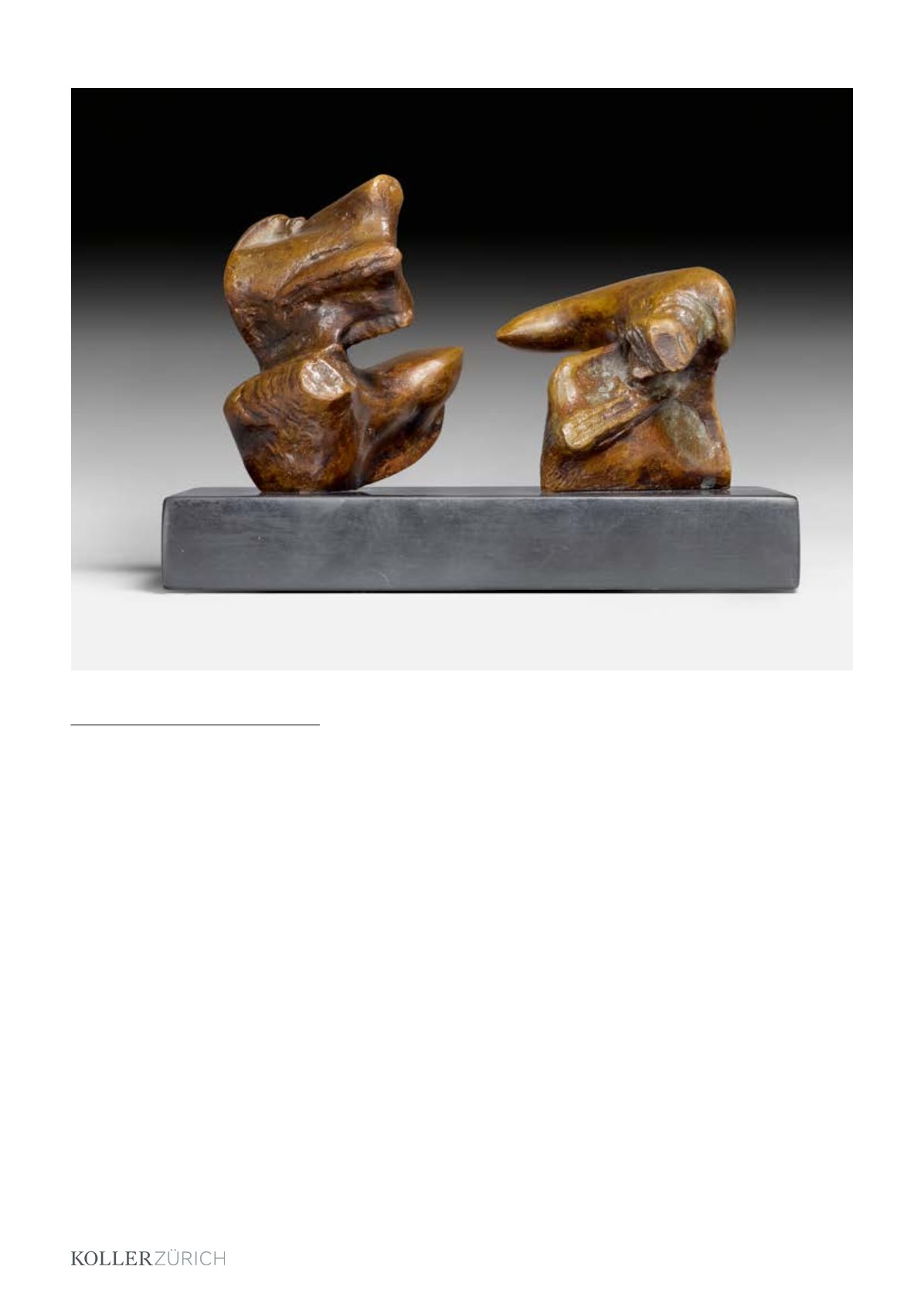

3261
| 63
3261
HENRY MOORE(Castleford 1889 - 1986 Much Hadham)
Maquette for Two Piece Reclining Figure:
Points. 1969.
Bronze with brown patina. 6/9.
Signed, with foundery mark and numbe-
red at the bottom on the inside: Moore
NOACK BERLIN 6/9.
16.3 x 9.3 x 11.3 cm.
Provenance:
- Private collection, Switzerland.
- Bought at Malborough Gallery, Zurich,
1970s.
Exhibition: Marlborough Fine Art: A Tribute
to Henry Moore, London, May to June
1987, no. 35 (a different exemplar).
Literature: Bowness, Alan (editor): Henry
Moore, Complete Sculpture 1964 - 1973,
vol. 4, no. 604 (a different exemplar).
Sculptures by Henry Moore always repre-
sent an abstraction of the human body. In
most cases the female figure is the inspi-
ration for his work, thus constituting the in-
itial starting point. With the exception of a
few cases where he depicts entire families,
his works mostly represent individuals. The
present work is a good example of Moore‘s
handling of the three-dimensional form. By
dividing the figure and creating separation,
yet maintaining connection through the
succession of points, he creates a tension
within the sculpture and new viewing pos-
sibilities of the figure.
“I did the first one in two pieces almost
without intending to. But after I’d done it,
then the second one became a conscious
idea. I realised what an advantage a sepa-
rated two-piece composition could have
in relating figures to landscape. Knees and
breasts are mountains. Once these two
parts become separated you don’t expect
it to be a naturalistic figure; therefore,
you can justifiably make it like a landscape
or a rock. If it is a single figure, you can
guess what it’s going to be like. If it is in two
pieces, there’s a bigger surprise, you have
more unexpected views; therefore the
special advantage over painting - of having
the possibility of many different views - is
more fully exploited.” (Quoted in "Henry
Moore's World", Atlantic Monthly, January
1962, p. 44.)
The present work is a small model for
the sculpture Two Piece Reclining Figure:
Points, produced between 1969-70 in an
edition of 7 plus an artist‘s proof. The large
sculptures are currently located in the
Hofgarten in Dusseldorf, in the Maxvor-
stadt borough in Munich, in the Royal Bota-
nic Gardens in London and in the Hirsh-
horn Museum in Washington D.C.
CHF 20 000 / 30 000
(€ 18 520 / 27 780)


















